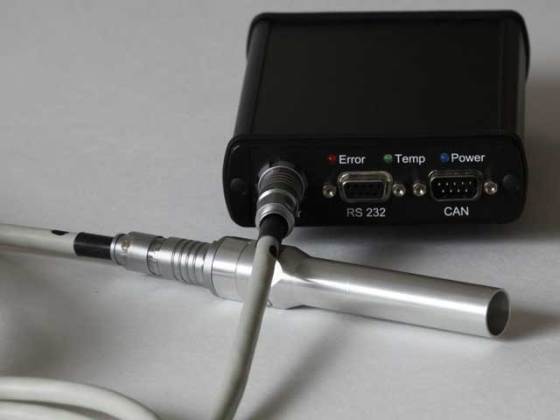Space technology used for production of better glass
 A technology used to measure oxygen atoms outside space vehicles is now being used in the glass industry to produce super-efficient energy-saving windows. Although it might not seem too important, modern architecture features large glass facades which need to be tough and have good insulating characteristics in order to counter heat loss during cold weather and overheating on warm summer days.
A technology used to measure oxygen atoms outside space vehicles is now being used in the glass industry to produce super-efficient energy-saving windows. Although it might not seem too important, modern architecture features large glass facades which need to be tough and have good insulating characteristics in order to counter heat loss during cold weather and overheating on warm summer days.
“For space, the sensor was developed to measure atomic oxygen, known for its erosion effect and for degrading optical surfaces”, said Frank Hammer, founding member of the German company ESCUBE, which developed the special instrument initially for spaceflight. “In the glass industry the technology is now used to control the industrial glass-coating process to obtain improved insulating properties.”
It all started back in 1993, when ESA asked the University of Stuttgart to develop ceramic gas sensors to measure the atomic-oxygen levels around reentry craft under extreme test conditions. Further miniaturized by the University of Dresden, the Flux-(Phi)-Probe-Experiments (FIPEX) were flown on several space experiments, including the Russian Inflatable Reentry and Descent Technology research capsule.
“Part of the European Technology Exposure Facility outside Columbus, FIPEX helps to understand the atmospheric environment in low orbit by measuring the highly aggressive corrosive atomic oxygen around the Station”, said Martin Zell, Head of ESA’s Research Operations Department. “The people from the University of Dresden and ESCUBE developed a very efficient sensor fulfilling our requirements for space, with reduced size, weight and power consumption.
Based on FIPEX and the specific glass-industry requirements, ESCUBE developed the new VacuSen sensor for vacuum and plasma applications, providing easy, low-cost, time-resolving process control for industrial processes such as a magnetron reactive gas sputter plant for float-glass coating.
ESCUBE’s sensor enables better production of modern glass. With the new coating, the overall heat transfer coefficients have been reduced to about a third of what they were in the 1980s, while maintaining light transmittance at 80%. The light passing through is almost the same as standard glass, but the heat loss during winter and the heat gain during summer have been reduced significantly.










Leave your response!